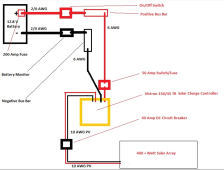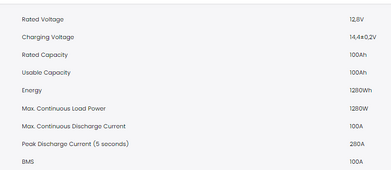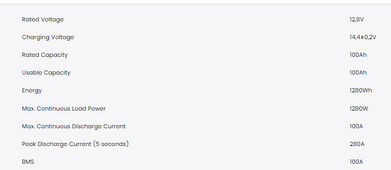Solar User
New Member
Hello all,
I am relatively new to solar power projects and I just wanted to see if anyone with a little more experience saw any issues with my diagram. I am wanting to get a Victron 150/45 Tr set up to charge batteries (I have several 12.8V, 100 Ah batteries). I inserted bus bars and used heavier guage wire from the battery so that I could add on a 2000 watt inverter and some other items at a later time. Just wanting to get any opinions before spending money on all of the components to build the setup. Thanks for any input.

I am relatively new to solar power projects and I just wanted to see if anyone with a little more experience saw any issues with my diagram. I am wanting to get a Victron 150/45 Tr set up to charge batteries (I have several 12.8V, 100 Ah batteries). I inserted bus bars and used heavier guage wire from the battery so that I could add on a 2000 watt inverter and some other items at a later time. Just wanting to get any opinions before spending money on all of the components to build the setup. Thanks for any input.







